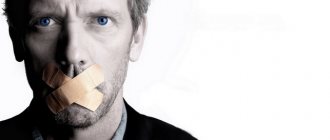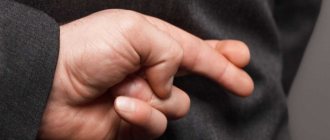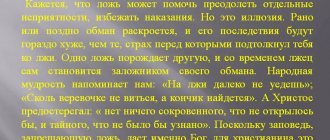Sometimes ignorance is bliss. The world is based on lies. To admit that in modern society the boundaries of the moral dilemma “lie-truth” are very blurred does not mean to be a cynic. This means being a realist, despite all the cynicism of such a judgment. Everyone lies: the media in pursuit of ratings, politicians to increase the number of followers, advertising to increase sales, and let’s be honest, we ourselves lie. From time to time the goal is to obtain some preferences, and sometimes this happens involuntarily.
The other side of the coin is that no one wants to be deceived. We do not want to fall for the tricks of scammers, buy a low-quality product, or enter into a deal with a dishonest person. Many of the methods used by police and forensic psychologists to detect lies can also be useful to people in other professions, for example, HR managers or employers, and anyone who does not want to be deceived.
We detect a liar by facial expressions
A combination of signs of deception shown by facial expressions and body language
- A momentary grin reveals a liar. If your communication takes place with a person who rarely smiles, then at the moment of lying you may notice a slight grin on his face. So a liar internally rejoices when he sees that his lie is believed.
- When a person lies, micro-tension of the facial muscles occurs, and this phenomenon lasts literally a few seconds. Only a very attentive interlocutor will be able to identify it in time.
- Frequent eye blinking can also indicate that you are being deceived.
- Pursed lips. The mouth becomes arched. Such facial expressions indicate puzzlement or regret. If during a conversation there are no such emotions, then pursing your lips may indicate a desire to lie.
- The appearance of distress on the face. It manifests itself as an involuntary raising of the eyebrows and the formation of a frontal fold. Asymmetry may also occur when emotions are expressed differently on the right and left sides of the face.
Head retraction
The person seems to be trying to hide. His neck is shortened, his chin is lowered low. This is an unconscious attempt to control your emotions. This behavior gives references to cave times. When a predator appeared, our ancestors had three options: run, fight, or pretend to be paralyzed so as not to attract attention. It is precisely the third option that modern liars use. They think that by shrinking into a ball, they can make the signs of lying less noticeable. But now you can figure out such a gesture.
Why bake a cake on March 14th? How mathematicians celebrate the birthday of Pi
Modern youth will never understand these moments from Soviet films
“Nature challenged us”: Sofia Ernst spoke about working in “Ugryum River”
Features of the look
- You can also tell a liar by your eyes. First of all, this is indicated by a running glance. Undoubtedly, such a phenomenon may be a sign of excessive shyness or a feeling of confusion. However, if you note these manifestations, it is still worth questioning what your friend says.
- Staring can also indicate that you are being lied to. In this way, the interlocutor is trying to track how you react to what he is telling, whether you believe his words or not.
- If during a conversation you notice that your opponent’s pupils are dilating, he may be deceiving you. Unless it reflects a normal reaction to the topic of conversation.
Speech of the Deceiver
- When a person lies, the intonation in his voice changes. He may begin to speak faster or slower, in higher or lower tones; it is possible that the voice will tremble, change timbre, appear hoarse or high notes, as well as stutter.
- Reservations. During times of excessive excitement, an individual may slip into incorrect phrases. But it is not necessary that you are being deceived. In such a situation, you need to evaluate the overall picture as a whole. Thus, clauses can be of two types: semantic and phonetic. The first appear when a semantic replacement of a word occurs, the second - when one word is replaced with a similar sound.
- Pause. If, while answering a question, a person becomes silent for a while and then expresses his opinion, then it is possible that the pause was needed in order to come up with something, that is, to lie.
- Repeating phrases heard from the interlocutor. A situation when an individual answers you with the same words that were posed in the question. Such repetitions indicate that, most likely, in this way he is gaining time to think about his lies.
- Excessive talkativeness, especially in a person who has not previously been observed to be so, may indicate that he is chattering to hide a lie or is uttering a memorized false text.
LIES AT THE TIP OF THE NOSE
Unexpectedly, the deceiver’s own nose can give him away. By telling a lie, he unconsciously begins to move the tip of his nose and move it to the side. And people who doubt the honesty of their interlocutor may involuntarily flare their nostrils, as if saying: “I smell something dirty here.”
The nose is generally extremely sensitive to deception: it itches and even enlarges (“Pinocchio effect”). Scientists have found that deliberate lying increases blood pressure and stimulates the body's production of catecholamine, which affects the nasal mucosa.
High blood pressure affects the nerve endings in the nose, causing it to itch. Gestures that somehow involve “rubbing,” such as someone rubbing their eyes, touching their nose, and scratching their neck, indicate insincerity.
Gestures of deception
Touching your nose during a conversation is a sign of deception.
Let's figure out how you can understand from a person's actions that he is deceiving; we recognize lies by gestures.
- During a conversation, the interlocutor touches his face.
- When talking, an individual involuntarily tries to cover his mouth with his hands. In essence, he is trying to close it so that the lie does not come out.
- Touches the nose, earlobes.
- While talking to you, the individual begins to rub his eye.
- Gestures widely with hands when it is inappropriate.
- He behaves stiffly, his movements are constrained. There are practically no gestures. Perhaps he is ashamed of his deception. Or he is afraid to give himself away with any movement.
However, you need to understand that gestures alone cannot be the only criterion for identifying a liar. The fact is that a person can rub his eye, for example, because he wants to sleep or something has gotten there, or an eyelash has bent. This is not always a sign of deception.
The man doesn't make eye contact
This is not always a clear sign of a lack of sincerity. A person may simply be embarrassed and feel insecure. Therefore, it is impossible to evaluate lies only on this basis. Associated gestures must also be taken into account. Many professional deceivers, by the way, in order not to give themselves away, will look you straight in the eyes, wanting to give their words more credibility. This is another reason not to rely only on this sign, but to evaluate it in conjunction with others.
Just like getting ready for a date: how beavers wash themselves in the river (video)
“Forgive”: how to answer a person if you don’t have the strength to forgive (and don’t take the sin on your soul)
Why did ancestors in the old days dream of good weather on Forgiveness Sunday?
Physiology and body language
- Profuse sweating. If you know that the person you are talking to does not sweat in everyday life, and you notice that in a particular conversation he is sweating a lot, you may be being deceived. Although it is possible that he got sick.
- Head nods. When asking your interlocutor a question that may have a one-word answer, watch his reaction. If he answers “yes” but at the same time waves his head from side to side, he does not agree with his words. If he says “no” and nods at that moment, he’s lying.
- Fidgety behavior, nervousness, inability to sit still, or unusual posture may indicate that the person is not sincere.
- A person who tells the truth is turned towards his interlocutor and may lean towards him during a conversation. If he cheats, on the contrary, he will move away.
- Rapid breathing and frequent swallowing of saliva may also indicate that a person is deceiving and is worried that his lie will be discovered.
- Crossed arms. First of all, such phenomena indicate a feeling of discomfort. Perhaps the interlocutor is in danger from the environment, in this way he protects himself. However, if such a manifestation occurs at the moment of answering the question posed, most likely he is lying. If he stood with his arms crossed during the entire conversation, it is possible that he was simply cold or did not feel openness towards you, perhaps he did not trust you.
- Half a turn. If an individual turns slightly in the other direction or turns his head to the side while answering a question, he may be lying.
- Hands in pockets. An individual may hide his hands or put them behind his back when he is insincere.
Warnings
You can misinterpret a sign and in vain accuse a person of lying
- You shouldn’t be overly suspicious and look for deceivers in everyone you know.
- Remember that no method gives a 100% guarantee of identifying a liar.
- Signs of deception can appear in groups, or they can occur individually. Therefore, sometimes it is difficult to determine whether a person is lying to you or not.
- Remember that people are individuals. Each individual can digest information and react to it in their own way. The signs of lying shown by individual people may also differ. Some will easily deceive, while others will not be able to do it at all.
- You may encounter a person who lies on a professional level. It will be almost impossible to recognize his deception. But even here you can try to bring the person to clean water by asking additional questions. Perhaps he will get confused in his lies.
- You need to understand that nonverbal signals do not in all cases confirm a lie. In some cultures, for example, staring at your interlocutor is bad manners.
- Signs of lying, manifested at the physiological level, for example, increased sweating, may not be a symptom of deception at all, but of problems with the health or physiological characteristics of the body of a particular person.
Now you know how to recognize a lie by facial expressions and gestures, behavior, words and looks. You will be surprised how often we are deceived in everyday life. Remember that lies are sometimes good. Perhaps a person is hiding something because he does not want to hurt his interlocutor. However, there are times when it is better to know that you are being lied to. It is possible that they want to harm you with such actions.
How to recognize lies in correspondence, text messages, over the phone?
During correspondence, it is especially easy to hide the truth, because we cannot hear the voice of the interlocutor or see his face. Most often, people lie about their plans. Situations are especially common when someone promises that they will be “in 5 minutes”, but at the same time is half an hour late. In addition to such situations, according to research, only 11 percent of messages contain deception and only 5 people out of all 164 subjects turned out to be real liars, and half of their correspondence was deception. So meeting a habitual liar on social media. networks are not easy. Here are a few signs that will help you identify such a person, or simply figure out that your interlocutor is not telling something.
- Using the words "that woman" or "that man" . By talking about someone in this way, the interlocutor is trying to hide the fact of intimacy or deliberately reduce the significance of this person in his life.
- If your interlocutor told you about many unusual events in his life , and you doubt their veracity, do the following. After some time, ask the person to talk about the same incidents, but in reverse order. For example, your pen pal told you a long story about how he went to visit his millionaire uncle. After a couple of days, ask him: “Excuse me, remember you told me about your uncle? So how did it all end? Big party? What happened before that? I forgot something...” This is a joke example. But the method works. After all, a liar, after some time, will forget about the sequence in which he lied and will definitely mix something up.
- Too many little things . If a person talks about some long-ago event in numerous details, then most likely he wants to deceive you. Agree, we sometimes don’t remember in detail what we did yesterday. And if a person remembers almost every minute of some last year’s event, then something is clearly wrong. Most often, a liar will use an overly detailed story about something to give you the illusion that what he is saying is true.
- Half-truth . Sometimes people only talk about part of their life. If he is a man, he may only talk about the positive aspects of his life to impress you.
- Excuses and slurred speech . In this case, the liar does not give a direct answer or begins to answer using vague or abstract expressions. The words “maybe”, “somehow”, “we’ll see”, “time will tell” are also used for excuses. This situation often arises when one of the interlocutors on social media. network gives advice to another. And this person does not want to follow the advice, but in order not to offend the interlocutor, he makes a vague promise that contains the words given above.











